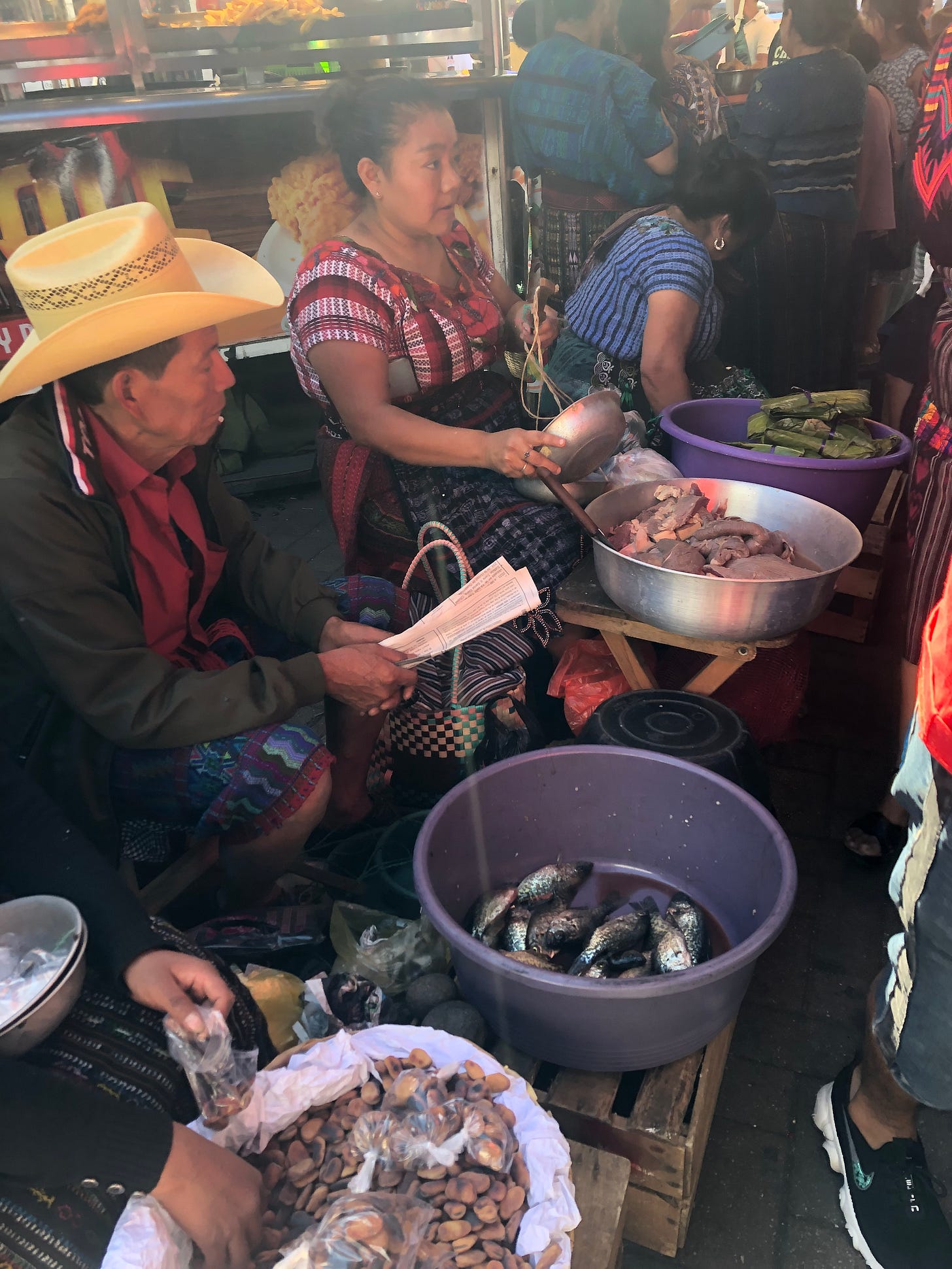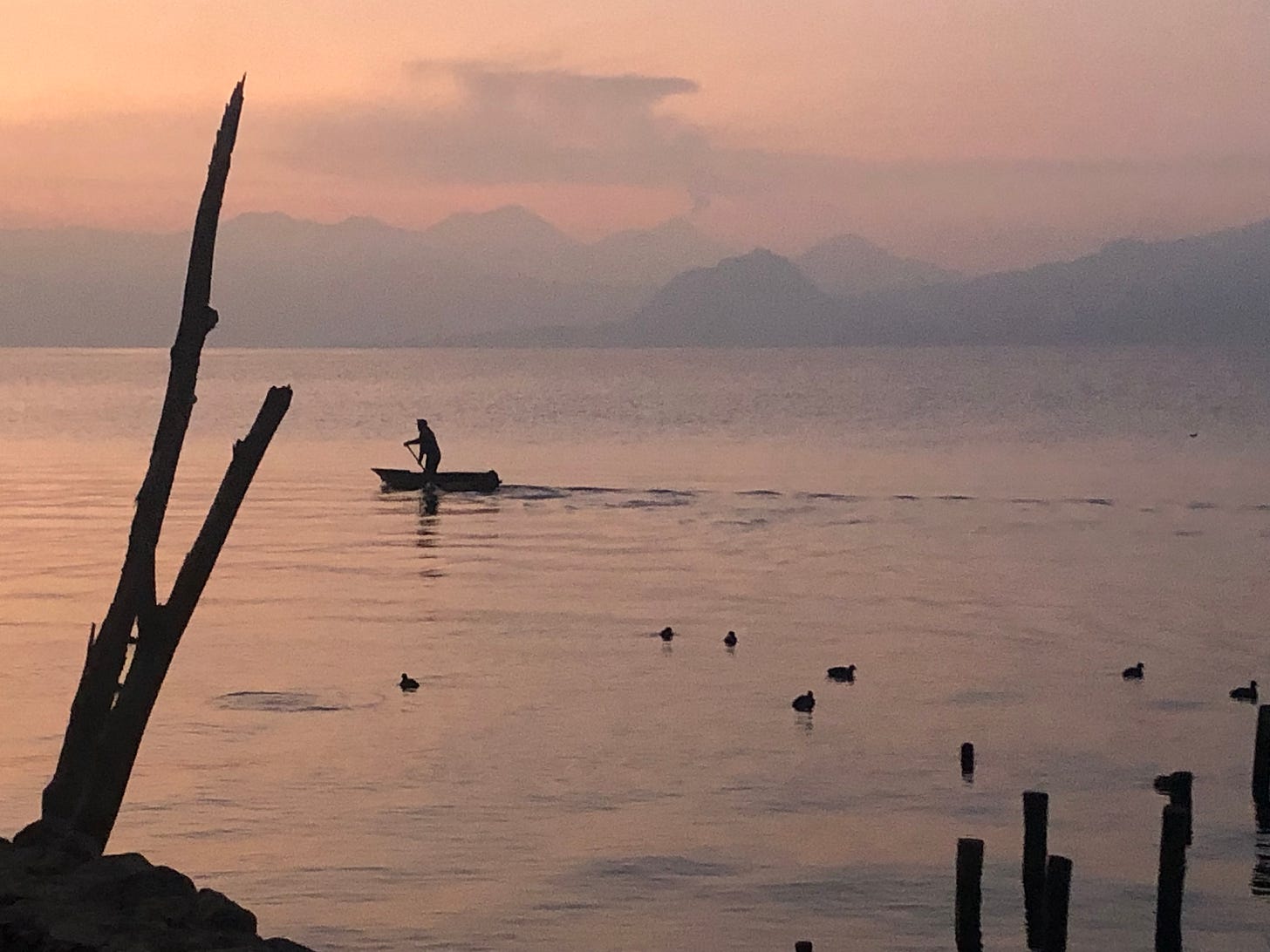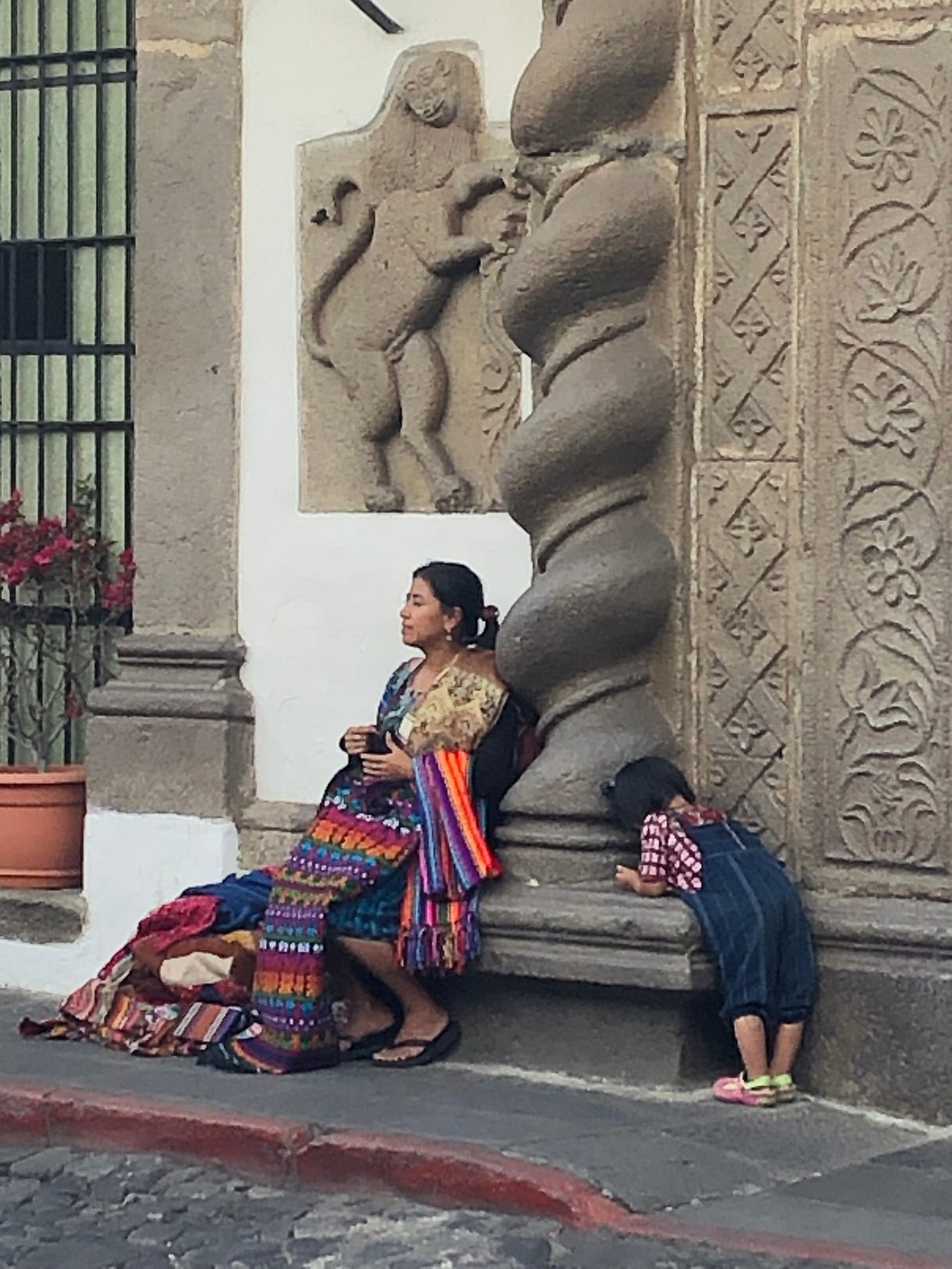“The Quetzal was always the joy of the air in Guatemala. The most resplendent of birds continues to be the symbol of the country, although now rarely if ever seen in the high forests where it once flourished. The quetzal is dying out while vultures are multiplying. The vulture, who has a good nose for death from afar, completes the work of the army, following the executioners from village to village, circling anxiously. Will the vulture, shame of the sky, replace the quetzal on banknotes, in the national anthem, on the flag?”
In 1988, when Eduardo Galeano wrote this in his astonishing and highly praised book Century of the Wind, he was referring to the brutal civil war that gripped Guatemala by that point for 36 years. His literary creation of vignettes, or what he called “episodes,” organized by date and location, managed to juxtapose and thereby connect the brutal history of practically every country in Latin America with the imperial ambitions of the United States and Europe.
The “reconquest of Guatemala,” as Galeano described it, took place as a result of a relatively brief encounter the country had with democratic principles in 1945 when Juan José Arévalo was elected. Arévalo was the country’s first democratically elected president following a popular uprising against the US-backed dictator Jorge Ubico, who not only served the wealthy landowners, including the United Fruit Company, but was known for being an oppressive tyrant. Unlike his predecessor, Arévalo set out to establish a social security system, literacy programs, a public health system, and labour laws to protect workers, but in doing so faced no less than 25 coup attempts by the military forces during the six years he was in power.
“El Joven Dios de Maíz (The Young God of Corn),” by Nan Cuz (La Galeria, Panajachel). Photo: Linda Pannozzo
The next president, Jacobo Árbenz, carried on the revolution and brought in more socio-economic reforms including an agrarian reform law that began to re-distribute the unused lands of United Fruit Company to peasants. This is when the US intervened to remove Árbenz in a covert Central Intelligence Agency-backed coup code-named Operation PBSuccess.
In 1997, we would learn more about the clandestine operation when some 1,400 pages of an estimated 100,000 pages of secret CIA documents held in the National Security Archive were declassified and released. The “Guatemala 1954 documents” including an instructional guide on assassination, showed how the CIA was involved in efforts to overthrow Árbenz using “psychological warfare and political action” as well as what it called “subversion.” It also provided assassination lists—“individuals for disposal”— including names of Arbenz government leaders, members of the Communist Party, and individuals “of tactical importance whose removal for psychological, organizational or other reasons is mandatory for the success of military action.”
Flower market near the Iglesia de Santo Tomás in Chichicastenango. Photo: Linda Pannozzo
In his book Open Veins of Central America, Galeano wrote:
A frenetic international propaganda campaign was launched. ‘The Iron Curtain is falling over Guatemala,’ roared the radio, newspapers, and the bigwigs of the Organization of American States. Colonel Rodolfo Castillo Armas, a graduate of the Fort Leavenworth military post, invaded his own country with troops trained and equipped for the purpose by the United States, and with the support from US-piloted F-47 bombers.
The “reconquest” of the country, as Galeano referred to it, was facilitated by “the lie machine”—a propaganda campaign whereby information, in the form of news, articles, pamphlets, photos, films and comic strips about Communist atrocities were used to “bombard” the public. “This education material, whose origin is undisclosed, comes from the offices of United Fruit in Boston and from government offices in Washington,” wrote Galeano.
Panajachel market. Photo: Linda Pannozzo
After the CIA installed Armas, the union of United Fruit workers and 500 other unions were prohibited from existing, and calling a strike became an offence punishable by death. Books were banned and political parties were outlawed. Human rights groups estimate that more than 100,000 civilians were killed, many of them from the indigenous Mayan and peasant population. A million became refugees and countless numbers were “disappeared.”
At the time of the US-backed coup, the head of the CIA was Allen Dulles, former member of the board of directors of United Fruit, and a lawyer who did some legal work for the company.1 His brother, John Foster Dulles was also a lawyer whose law firm Sullivan & Cromwell represented United Fruit and negotiated land giveaways to the company in both Guatemala and Honduras. Both brothers were on the fruit company’s payroll for 38 years.
Early morning fishing on Lake Atitlan, near San Marcos. Photo: Linda Pannozzo
Galeano wrote that the same forces that bombed Guatemala City on that summer night in 1954 continued to be in power for nearly 40 years. A succession of brutal, repressive dictatorships over several decades gave plantation owners unprecedented powers, including the right to carry arms. Entire Mayan villages were exterminated. Violence became a way of life.
According to an article by Irin Carmon, when news of human-rights abuses led the Carter Administration to stop military aid to Guatemala in 1977, Israel “filled the vacuum.”
“Israel was not only acting as a surrogate for the United States but also working to oppose the Soviet Union and grow the market for Israeli arms. The cooperation didn’t just involve UZIs and hand grenades; it also included providing intelligence and operational training, both in Israel and in Guatemala, to the right-wing government,” writes Carmon.
We know now that Israel supplied, trained, and advised paramilitary forces, including running intelligence and counter-insurgency operations in many “dirty war” civil conflicts in Latin America in the 1970s and 1980s.
One of the most known Mayan activists of that time was Rigoberta Menchú, who became involved in Indigenous and workers’ rights movements as a teenager. Her father, who was imprisoned and tortured for his alleged participation in the execution of a plantation owner, founded the Committee of the Peasant Union (CUC) when he was released from prison. When Menchú joined, her brother was arrested, tortured and killed by the army. Her father was also killed shortly thereafter when he was protesting inside the Spanish Embassy. Her mother, after being tortured and raped, was also killed. Eventually, like many activists in Guatemala, death threats forced Menchú to flee to Mexico where she continued to struggle for Indigenous and peasant rights, eventually winning the Nobel Peace Prize in 1992. Photo: Wikimedia Commons.
In Century of the Wind, Galeano chronicled an 86-year history of Latin America beginning in 1900. He made it clear that dictators were always doing someone’s bidding, and crucially, the “someone” was always shifting from those with vested interests in fruit to oil to minerals. Near the end of the book, he wrote an episode titled: “1984: Guatemala City thirty years after the reconquest of Guatemala,” which reads:
The Bank of the Army is the country’s most important, after the Bank of America. Generals take turns in power, overthrowing each other, transforming dictatorship into dictatorship; but all apply the same policy of land seizure against the Indians guilty of inhabiting areas rich in oil, nickel, or whatever else turns out to be of value. These are no longer the days of United Fruit, but rather of Getty Oil, Texaco, and the International Nickel Company.
Indeed, the Canadian government and mining companies based here have also been involved in Guatemala’s bloody history. In 1964, for instance, Canada’s mining giant INCO illegally acquired a 40-year mining license from Guatemala’s military regime, covering more than 400 square km of Mayan Q’eqchi’ territory. Between 1975 and 1985 the World Bank and Inter-American Development Bank partnered with the genocidal generals of the country’s military regimes to build the Chixoy hydro-electric dam, resulting in the illegal eviction of 30 Mayan villages on the Chixoy River (Rio Negro) as well as the 1981 and 1982 massacres of more than 440 villagers. Between 1997 and 1999 the Canadian government funded and supported efforts by the Guatemalan government to reform their Mining Laws to make them corporate and investor-friendly.
According to Rights Action, between 2004-2020 the global mining industry, dominated by Canadian companies, “burst into the public eye in Honduras and Guatemala.” Goldcorp Inc. (now merged with Newmont Gold) began operating an open pit gold mine in San Miguel Ixtahuacan while Skye Resources –a Vancouver-based mining company, re-opened INCO’s long dormant nickel mine in El Estor, Guatemala.
A case that is currently ongoing in the Canadian courts filed in 2011 by a group of 11 Guatemalan women alleges that Hudbay Minerals and its subsidiary HMI Nickel Inc were complicit in the gang rapes committed by the company’s private security forces on the Fenix nickel mining project in El Estor on the north shore of Lake Izabal, the country’s largest lake.2
Flower market, San Marcos La Laguna. Photo: Linda Pannozzo
In 1996 Peace Accords were signed by the newly elected government and four guerilla organizations and the civil war came to an official end, but peace has been tenuous ever since, partly attributable to the continued land ownership disparities and persistently high levels of inequality.
As well, those who were formerly involved in repression managed to remain in positions of power. For instance, Rios Montt, a former military officer who was president in 1982 for one year during one of the bloodiest periods of the civil war, became parliamentary president in the 2000-2004 government headed by Alfonso Portillo. Montt was accused of acts of genocide after a three-year investigation by the Centre for Human Rights Legal Action. In 2013 he was convicted of genocide and committing human rights atrocities and sentenced to 80 years in prison—a decision that was quickly overturned by Guatemala’s highest court. His retrial was never completed. He died in 2018.
After Montt, the country elected another military president—Otto Pérez Molina—who was a commander during the Montt regime. According to Carmon, Molina’s win was seen as a vote for remilitarization in response to a spate of violent crime perpetrated by gangs and “narcotraffickers.”
Antigua’s iconic archway and cobblestone roads. Photo: Linda Pannozzo
When I visited Guatemala in 2001 – my third time visiting the country – it happened to be during a 30-day government imposed “state of alert.” Seventy-eight maximum security prisoners had escaped from the prison nicknamed “Hell” about 50 km south of Guatemala City. They were helped to escape by nearly 20 prison guards who were all bribed. As a result of the government decree—which was justified as a way to facilitate the recapture of the fugitives—regular law-abiding Guatemalans had four of their constitutional rights suspended, including freedom of movement and the rights of suspects taken into custody.
At the time, I interviewed Barbara Freiberg who was the director of the now-defunct Project Mosaic Guatemala, a group based in Antigua that was helping to link international volunteers and resources with needy projects throughout the country. Frieberg told me at the time that the government was doing nothing to improve the “skyrocketing poverty which is at the root of the increase in crime.”
“The military are confined to the barracks, we don’t see them much, and the civilian police aren’t doing much either.”
Over a six-month period that year, there had been 43 lynchings “mainly in indigenous Mayan villages ravaged by wartime counter-insurgency efforts,” reported one Guatemalan newspaper article on the subject. The problem of lynchings had become so dire that the United Nation’s Verification Mission in Guatemala wrote a report on the subject. The so-called vigilante justice is often carried out by members of former civil defence patrols that were organized by the army during the civil war to replace indigenous authority structures.3
But the sentiment that voted Molina – and his promise of an “iron-fist” – into power in 2012, would soon transform into something else – something the country really hadn’t experienced for a very long time.
Lake Atitlan surrounded by three volcanoes: Atitlan and Toliman (on left), and San Pedro (on right), San Marcos La Laguna. Photo: Linda Pannozzo
When the super volcano, Los Chocoyos erupted 100,000 years ago, blowing itself to pieces, and sending ash as far away as what we now know as Ecuador and Florida, it left behind a crater 1,120 feet (340 m) deep that is today Lake Atitlan. The lake, the deepest in Central America, is surrounded by three younger volcanoes: Atitlan, the most active of the trio, Toliman, and San Pedro, all part of the Sierra Madre mountain range. I recently spent a month in Guatemala, mostly on the lake, mostly in the village of Panajachel, but also had the chance to visit San Juan, San Marcos, San Antonio, as well as the nearby tourist meccas of Chichicastenango and Antigua.
In his 1934 travel book Beyond the Mexique Bay, Aldous Huxley compared Lake Atitlan to one of Italy’s deepest and most picturesque lakes: “Lake Como, it seems to me, touches on the limit of permissibly picturesque, but Atitlán is Como with additional embellishments of several immense volcanoes. It really is too much of a good thing.”
Sitting on the serene, lapping shores of Atitlan, it’s easy to forget that the country has been gripped for so long by violence and corruption or that it has just undergone a serious test of what democratic principles might remain.
Indigenous woman selling her wares in Antigua, while daughter scrolls on a cell phone. Photo: Linda Pannozzo
On January 14, 2024, a few weeks before we were set to travel to the country, Bernardo Arévalo—the son of Juan José Arévalo, the country’s first democratically elected president—was set to assume the presidency and control of the executive branch of government. For six months leading up to the inauguration, it felt like it might never happen. There was news about the corrupt elites who had traditionally held power attempting everything they could to undermine the election, block the electoral process, or overturn the election results. Before the August 2023 election, for instance—in which Arévalo won—the police raided his party office, a move that he said amounted to “political persecution.”
Another troubling indicator of the extent to which the corrupt elites were willing to push-back after the election of Arévalo was the arrest of Claudia Gonzalez who served as a lawyer for the United Nation’s International Commission Against Impunity in Guatemala (CICIG)—which acted for 12 years beginning in 2007 to investigate criminal groups believed to have infiltrated state institutions, “fostering impunity and undermining democratic gains” made in the country since the end of the civil war. According to news articles, many of the judges and prosecutors involved in the UN investigations of government corruption over the years have been threatened with legal action and forced to flee the country.
Blockades and protests throughout the country in support of the president-elect lasted for months following the move by prosecutors, upheld by the highest court, to suspend Arevalo’s party over alleged voter registration fraud.
The centre-left Semilla (“Seed”) Movement, which campaigned on an anti-corruption platform, formed in 2014 as an “analysis group” of university professors and students and intellectuals but transformed into a political party in 2015 against the backdrop of massive anti-corruption protests, and the demand for the resignation of the “iron-fist” president Otto Pérez Molina. Molina did resign, along with his vice president, and was convicted and sentenced to 16 years in prison for bribery, but that decision is under appeal.
View of Lake Atitlan from a hike down to Santa Catarina. Photo: Linda Pannozzo
One observer I spoke to who has lived in Guatemala for more than 30 years describes the corruption in Guatemala as being “institutionalized.” This is certainly the impression one gets reading the recent report from Human Rights Watch, which essentially states that in 2023—an election year in the country—corrupt institutions weakened what little existed of the country’s democracy and justice system.
“Authorities undermined institutional checks on the abuse of power to prevent accountability,” states the HRW report. “Independent journalists, prosecutors, and judges who had investigated and exposed corruption, human rights violations, and abuse of power faced increased harassment and criminal prosecution.”
HRW reports a litany of abuses and corruption during the run-up to the presidential election in 2023: candidates were barred from running for office on dubious grounds; the attorney general’s office launched an arbitrary criminal investigation against one presidential candidate simply because he criticized a judge’s decision to investigate nine journalists; the AG office also tried to suspend the registration of the winning Semilla party on the basis of alleged registration-related crimes; after the 2023 election of Arévalo, the AG Office also requested 27 arrest warrants against activists, students, academics, and human rights defenders, accusing them of participating in or promoting a largely peaceful protest that took place in 2022.
According to Rights Action, the economic, political and military elites “weaponized” the legal system in what it refers to as “lawfare” to stage an electoral coup and attack the Semilla Party and its members as a way to prevent them from assuming the government and to “block the country’s return to actual democracy for the first time in 70 years.”
Mayan woman weaving. Photo: Linda Pannozzo
Despite the reported efforts to derail it from happening, Arévalo took office on January 14, 2024. In his inauguration speech he promised to “build robust and healthy democratic institutions on the rubble of this wall of corruption that we are beginning to tear down, one by one, brick after brick.” He also noted, “Over these past few months, we have faced complex tensions and challenges that led many to believe we were destined for an authoritarian retreat. For thousands of people, these months suggested the resurgence of the dictatorship in Guatemala.”
Guatemala’s Congress is currently divided among more than 17 political parties, with the Semilla Movement winning only 23 out of 160 seats, but apparently able to forge the alliances needed to pass laws.
But two days before Arévalo’s inauguration, a strange thing happened. The Council of the European Union announced it had established “a dedicated framework of restrictive measures in support of democracy,” which will give the EU the power to “impose restrictive measures” including travel restrictions and the freezing of assets of Guatemalans it deems are “obstructing a democratic transition,” or “undermining democracy.”
The Biden administration in the US also expressed support for Arévalo, who is seeking billions in US investment in the country, in addition to financial relief from groups like USAID, a US tax-payer funded “aid” organization that “serves as Washington’s soft-power arm, pushing regime-change operations under a “humanitarian” guise,” according to the Grayzone.
But then I also just heard today that a former Guatemalan general, Benedicto Lucas Garcia, is on trial for genocide and crimes against humanity. He was trained by the US and when he committed atrocities in the early 1980s, they were legitimized by the Guatemalan regime as well as western powers as part of “the war against communism” and “in defence of democracy.”
It all feels very disorienting and quite frankly it’s difficult to take anything at face value anymore.
While the election of Arévalo seems like a very hopeful sign, what does the pledge of US and EU “support” mean for a country that is seeking sovereignty and has suffered horrifically for decades under American and European interests? Has the country really escaped the controlling grip of ruthless foreign interests by electing Arévalo, or has the mechanism of control just been transformed?
I hope I’m wrong, but I suspect it’s the latter. But I also have faith in the people of Guatemala: if this is a ruse, and if the west intends to continue to direct the country’s policies and governance in the interests of corporations—only this time without the use of death squads—Guatemalans will be able to see through it.
As Galeano reminds us, the generals can wipe out the villages, expel people from their lands, and strip the people of everything, but they cannot destroy the human spirit. He writes:
“They come from horror, but they are not going to horror. They walk slowly, guided by the ancient certainty that someday greed and arrogance will be punished. That’s what the old people of corn assure the children of corn in the stories they tell them when night falls.”
These are the stories we all need now. Perhaps more than ever.
Dulles oversaw the 1954 Guatemalan coup d’etat, but also oversaw the 1954 coup in Iran, the Project MKUltra mind control program, and the Bay of Pigs Invasion. His brother, John Foster Dulles was the Secretary of State during the Eisenhower administration.
Parts of this essay relating to my 2001 visit to Guatemala have been adapted from a 2001 piece I wrote titled “Valley of the Guns: Guatemala five years after the Civil War,” which appeared in the September/ October issue of HighGrader Magazine.















Brilliant article, thank you.
re "Has the country really escaped the controlling grip of ruthless foreign interests by electing Arévalo, or has the mechanism of control just been transformed? I hope I’m wrong, but I suspect it’s the latter."
Unfortunately, you're probably not wrong. I hope the old people of corn are not wrong as well.
Excellent overview of the brutality done to the Mayan people by so called western 'democracies' such as the U.S. and Israel. Anthony Lowenstein has written a book detailing Israel's role in supporting fascist governments commit massive, brutal human rights abuses throughout the world. Here is an excerpt from an article by Thomas Fazi -https://www.thomasfazi.com/p/israel-arming-and-supporting-fascism, on Lowenstein's book on Israel's role in helping commit atrocities in Guatemala.
Loewenstein describes Israel’s technical-material support for this genocidal campaign:
One of the most effective ways that Israel assisted the Guatemalan regime was the installation of a computer listening center by the private Israeli company Tadiran Israel Electronics Industries. It became operational in late 1979 or early 1980 and housed the names of at least 80 percent of the population. The Israeli media reported that the aim was to “follow up the guerrilla movements in the capital”, and there were allegations that the facility was connected to the US Army’s Southern Command at Fort Gulick in the Panama Canal Zone.
Israel’s marriage with Guatemalan tyranny was cemented with the elevation of President Efrain Ríos Montt, who ruled between 1982 and 1983 and committed mass violence against the indigenous Maya population, possibly killing up to 75,000 people. Israel’s involvement was not hidden. The Israeli media reported when Ríos Montt carried out a coup on March 23, 1982 that Israeli military advisors had assisted in the operation. Ríos Montt told an ABC reporter that the coup was a smashing success “because many of our soldiers were trained by the Israelis”. Declassified documents show that Israel hoped that its strong support for Montt might generate support for its occupation of the West Bank and lead him to move Guatemala’s embassy to Jerusalem. Montt was found guilty of genocide in a Guatemalan court in 2013, the first time a former head of state was tried for these crimes in his own country, and was sentenced to eighty years in jail. After years of legal wrangling, a retrial was underway in 2018 when Montt died at age ninety-one.
The most notorious massacre occurred at the small village of Dos Erres on December 6, 1982, where around 300 people were slaughtered. The brutality was shocking. Skulls were smashed with sledgehammers and bodies were thrown down a well. Israel had played its part in the Dos Erres massacre. The 1999 UN Truth Commission, after visiting the area to exhume the bodies, detailed in its forensics report that “all the ballistic evidence recovered corresponded to bullet fragments from firearms and pods of Galil rifles, made in Israel”.